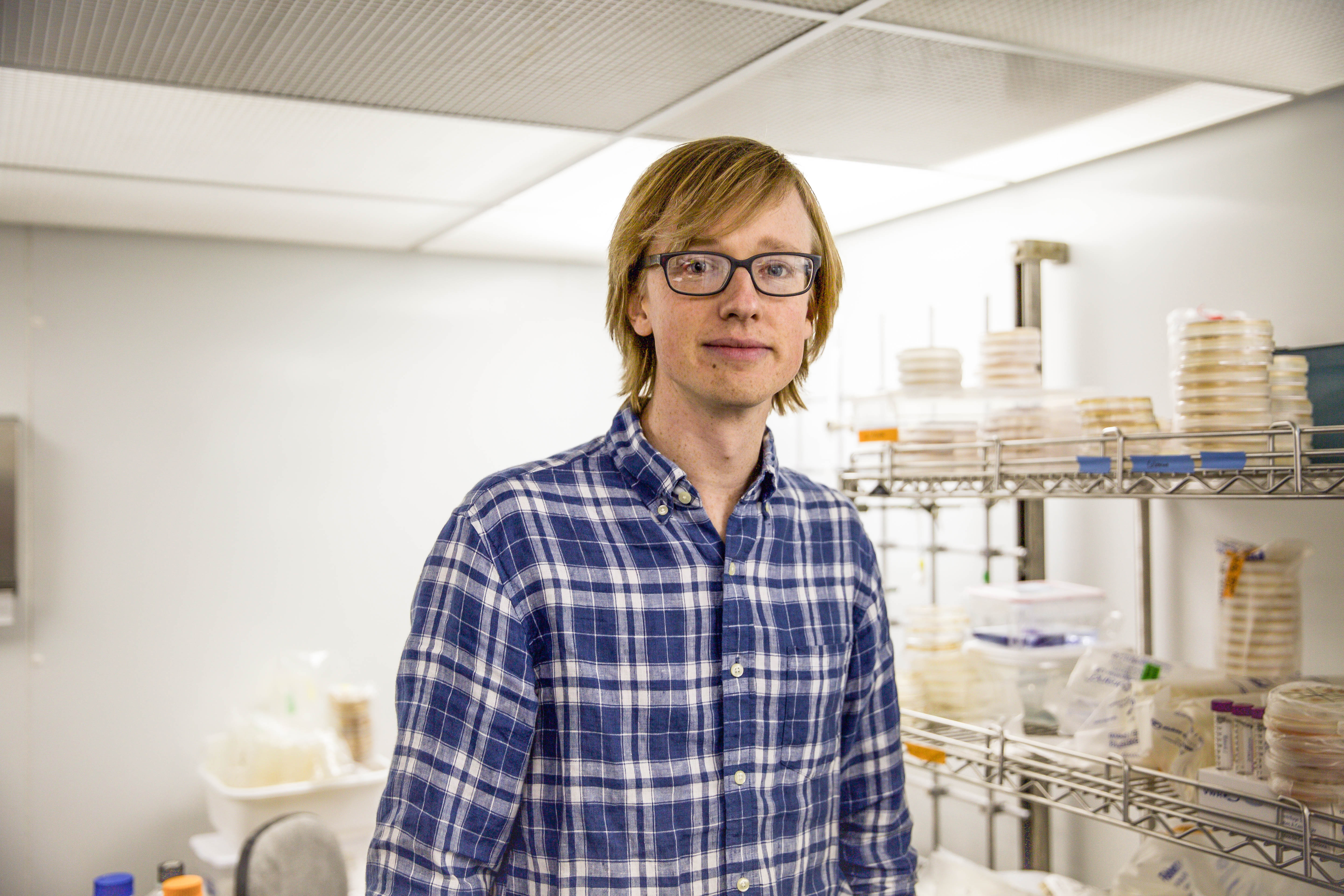
This fall, five new tenure-track faculty members joined Scripps College, including Ethan Van Arnam, who is an assistant professor of chemistry at the W. M. Keck Science Department of Claremont McKenna, Pitzer, and Scripps Colleges. Van Arnam grew up in southeastern Connecticut and received his BA in chemistry from Bowdoin College in 2007. He completed his PhD in chemistry at Caltech in 2013, where he studied chemical interactions between drugs and their protein targets. In his postdoctoral work at Harvard, his interest shifted to chemical ecology, and his research focused on antibiotics produced by symbiotic bacteria that live on ants. Van Arnam uses ecological frameworks, especially insect-microbe associations, to guide the discovery of new antibiotics. He is also interested in using these systems to understand how evolution crafts new chemical structures.
Scripps College: Can you tell us how chemical ecology captured your attention during your postdoctoral work?
Ethan Van Arnam: Bacteria are extraordinary chemists. They can produce molecules with remarkably elaborate chemical structures and impressive functions. Many antibiotics in clinical use are actually molecules produced by bacteria. However, we know surprisingly little about how these molecules function in nature, and why bacteria go to such great lengths to produce them. In my postdoctoral work, I studied an unusual system that provides a window into antibiotic function in nature: leafcutter ants that carry antibiotic-producing bacteria on their bodies. These bacteria and their antibiotics appear to help the ants fight off fungal pathogens in their nests.
I find the chemical ecology connecting ants, bacteria, and antibiotics to be completely fascinating. Further, several of the antibiotics that we characterized were previously unknown and actually have reasonable promise as clinical candidates for human use.
SC: How has your research on insect-microbe associations evolved since then? And, how will chemistry students at Scripps be involved in this or related research?
EVA: Studying these ants and their defensive bacteria opened my eyes to this broader theme of animals benefiting from antibiotics and other defensive molecules produced by bacteria. It is especially exciting that these systems could be an untapped source of useful new antibiotics. In my lab, we will continue to study antibiotics from the defensive bacteria of leafcutter ants and will also study other insect-microbe associations to search for new antibiotics and to understand what role these molecules play in nature. Students will be involved in all aspects of this work, including fieldwork collecting insects and isolating bacteria from them, microbiology work growing these bacteria in the lab, and chemistry work purifying and characterizing antibiotics and other active molecules. There’s a lot to do!
SC: What classes are you teaching? Do you have ideas for new classes that you’d like to introduce at Keck?
EVA: Right now, I am teaching biochemistry, a course about the molecular underpinnings of life that bridges organic chemistry and biology. I’m also teaching Advanced Laboratory in Chemistry, an upper-level lab course in which students design and execute their own experimental plans and gain expertise using advanced instruments. In the future, I would love to teach a course on the biosynthesis of antibiotics and other complex molecules by bacteria. As I mentioned earlier, bacteria are remarkable chemists, and we have a lot to learn from them.
SC: Is there a fact about yourself that is surprising, or that people don’t know about, that you’d like to share?
EVA: After finishing college, I hiked the length of the Appalachian Trail from Georgia to Maine. It took almost five months, and I went through five pairs of hiking shoes. I’m content to do a lot of sitting on the couch at home now.

